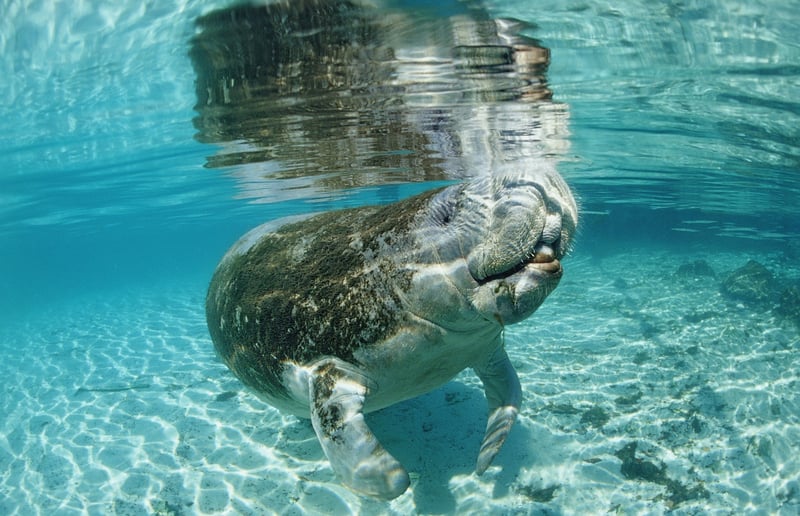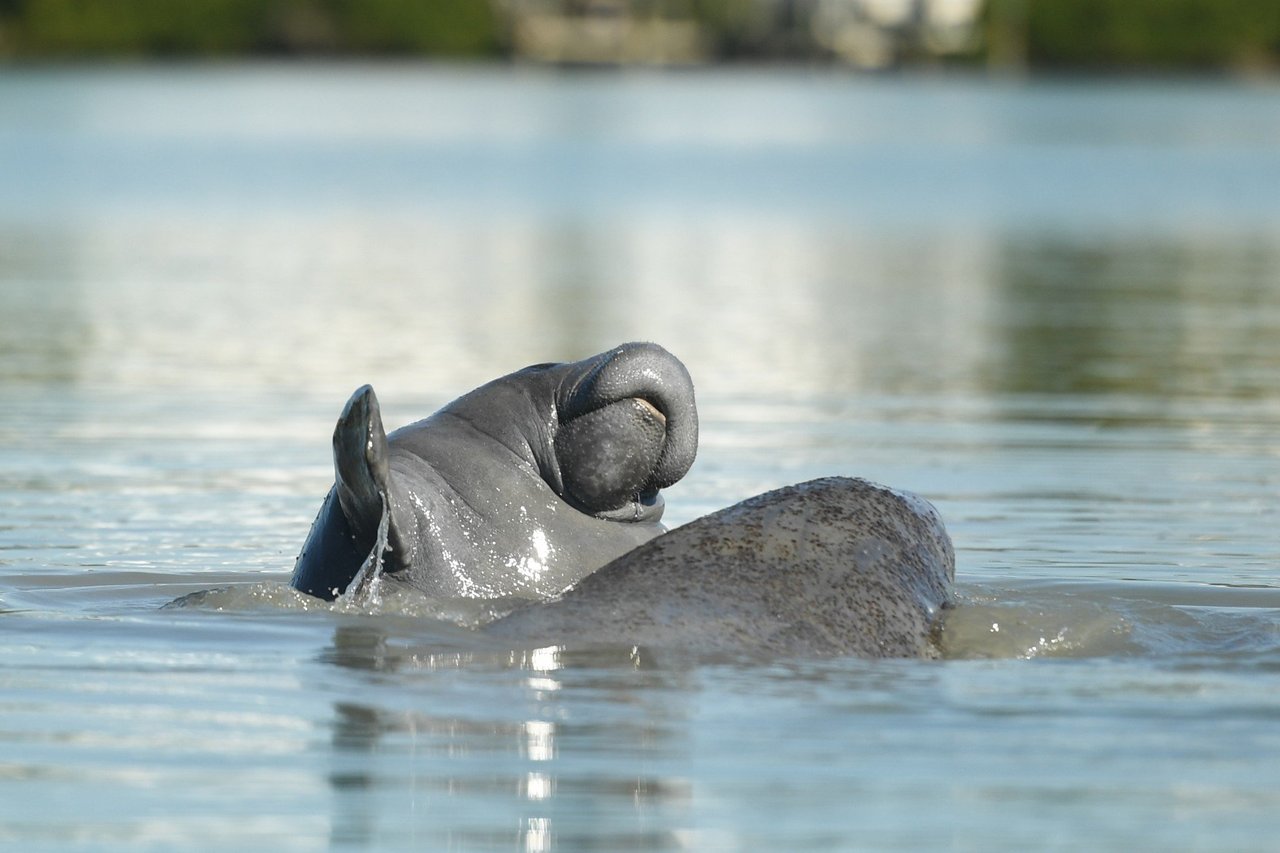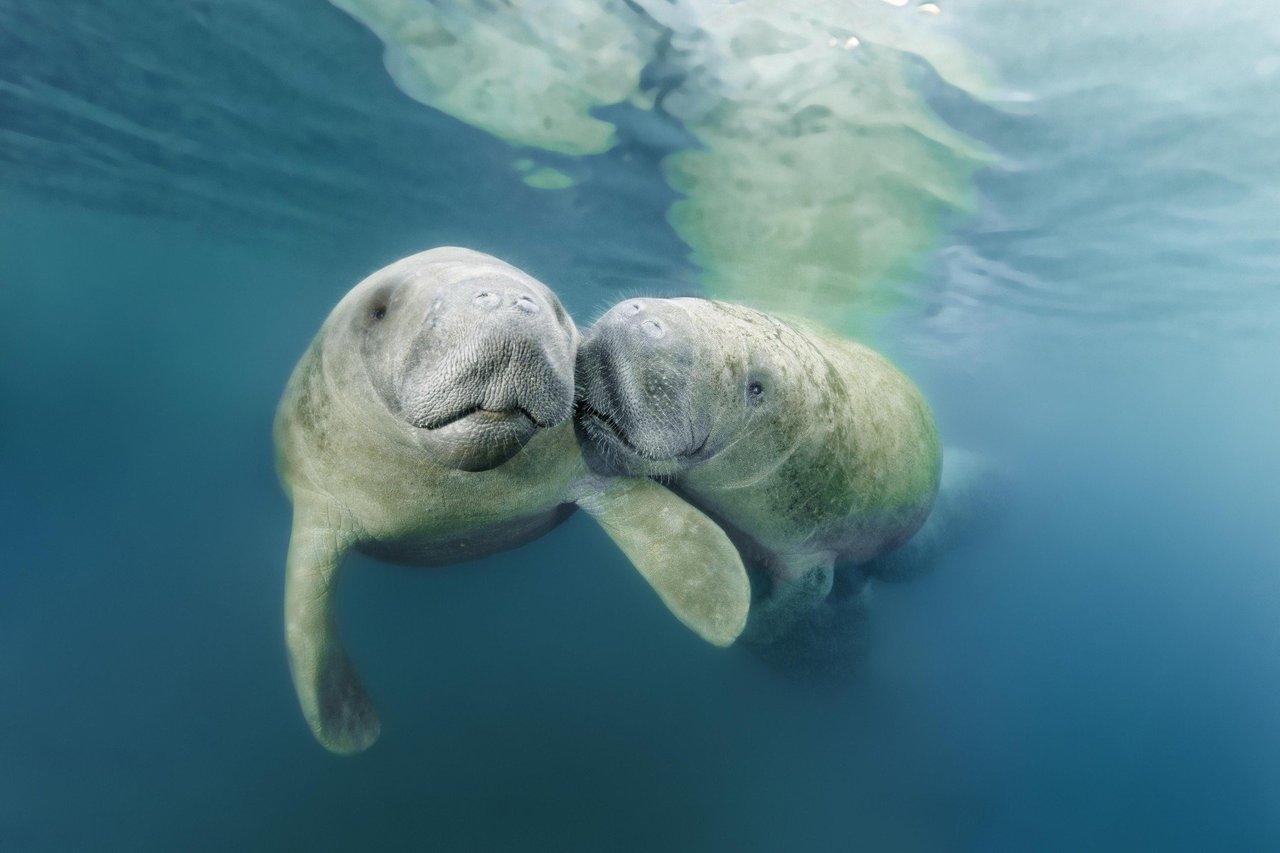
Discover 10 fun facts about manatees that will surprise and delight you. Learn more about these gentle giants and their unique behaviors.
1. Manatees are mammals, and their closest relative is the elephant.
Despite being sea creatures, manatees closely resemble elephants in their lineage (manatees’ leathery, grey skin is a telltale sign!). Manatees are part of a group called the sirenians--which also includes dugongs--and are thought to, in conjunction with elephants, mastodons, and wooly mammoths, have all descended from a common ancestor.
2. Manatees move at a relaxing speed of about 5mph.
Wondering what’s all over the manatee’s plump body? That would be millions of algae and barnacles—manatees’ slow-motion swimming allows tiny ocean life to thrive on their skin.
3. Manatees’ brains are small—but they’re highly intelligent.
Manatees have been shown to perform just as well as dolphins when given specific tasks. Their thick skin contains a plethora of hairs called vibrissae that provide them with an exceptional sense of touch, which compensates for their lack of full-color vision.
4. Manatees are very versatile swimmers.
Despite clocking in at a hefty 9-10ft long and weighing anywhere from 1,000-3,500 pounds, manatees are surprisingly agile. Manatees can swim vertically, upside down, barrel roll, and even do somersaults (typically reserved for playtime)!
5. Manatees have a voracious appetite.
Manatees can eat a whopping 10-15% of their body weight each day, rightfully earning their ‘sea cow’ nickname. Being that manatees are herbivores, these calories typically come from various underwater grasses.
6. Manatees were once thought to be... mermaids?
In the 15th century, sea creatures like mermaids, krakens, and sea serpents were popular in common folklore. The first recorded spotting of a manatee in North America was by Christopher Columbus in 1492, who thought the manatee he saw was a mermaid. Manatees’ biological grouping as sirenians gets its name from the Greek mythological sirens—a popular type of mermaid that lured sailors through song.
7. Manatees are constantly losing and re-growing their teeth.
All of manatees’ teeth are molars, and their consistent tooth regeneration makes herbivorous grazing a breeze, especially since the grasses they eat are often riddled with sand.
8. Manatees are protected by the Marine Mammal Protection Act (MMPA).
Enacted in 1972, the MMPA ensures that, generally, threatened species like manatees are not to be taken from their natural habitats.
9. Manatees don’t have any natural predators, making for a long lifespan.
Manatees can live long lives, often 60 years or more!
10. Manatees are considered a threatened species, and their oceanic habitats are increasingly exposed to the harmful effects of factory farming.
Though manatees were recently removed from the endangered species list, they’re now considered threatened and are dying in vast numbers due to nutrient runoff from factory farming. When factory farming runoff reaches the ocean, it aids the development of toxic algal blooms that destroy manatees’ top food source: seagrass.
Help protect manatees (and farmed animals!) by reducing your meat consumption and your reliance on the factory farming system that destroys manatees’ habitats.

